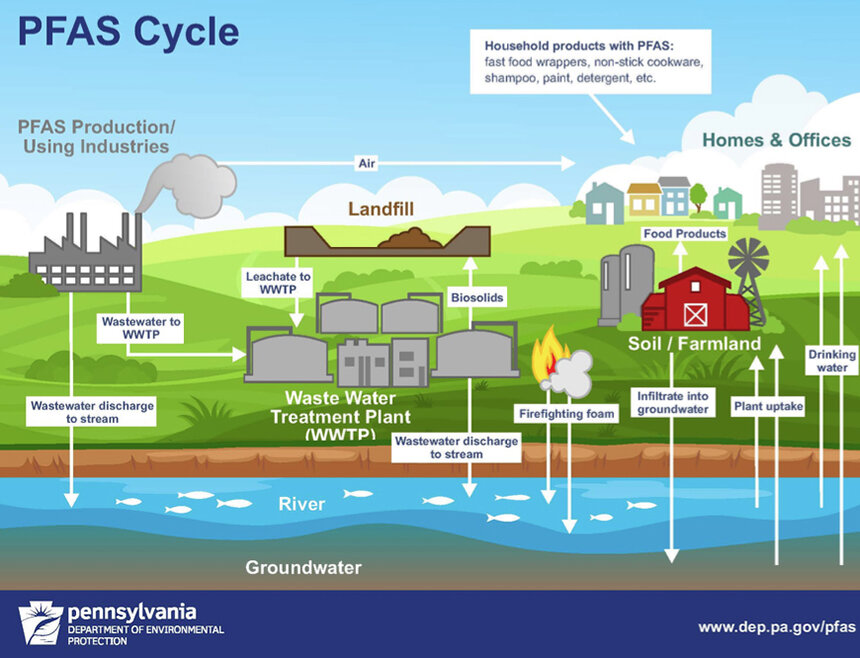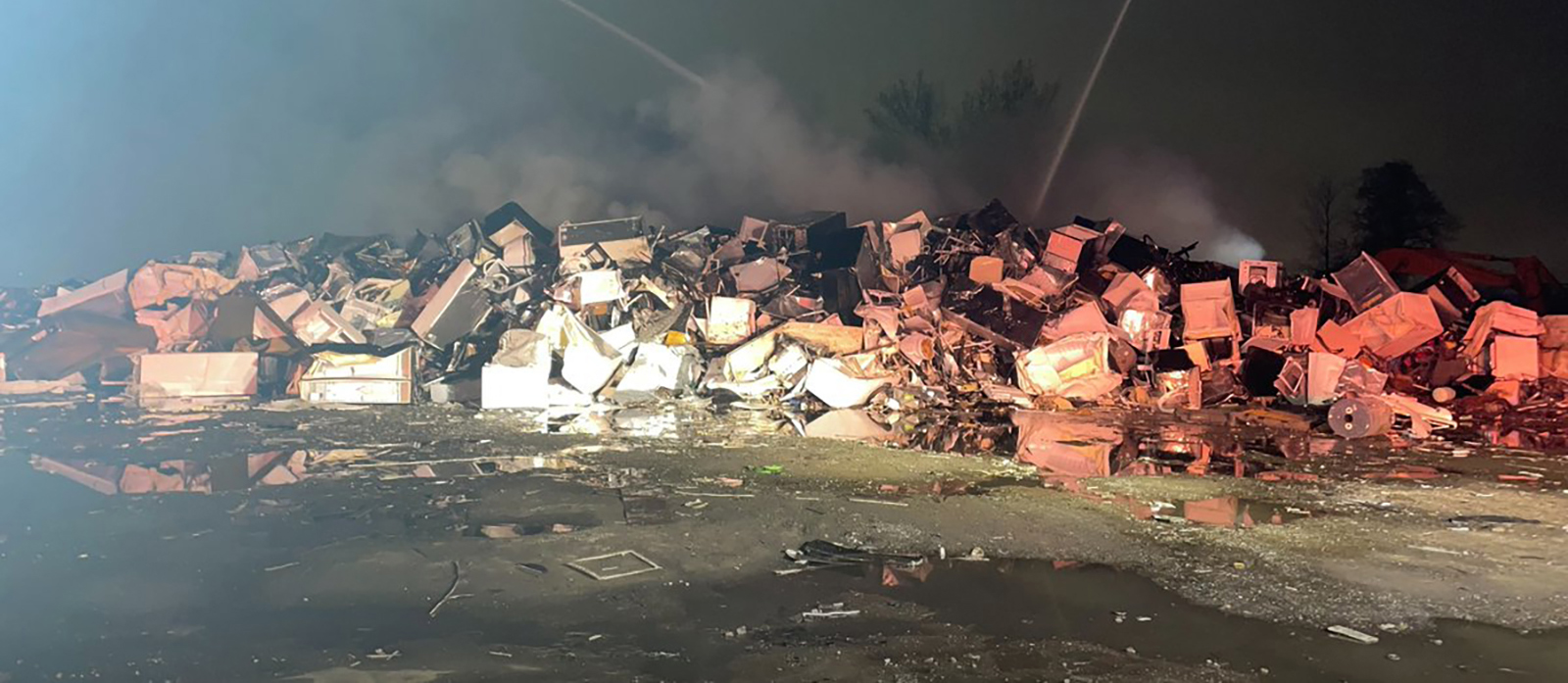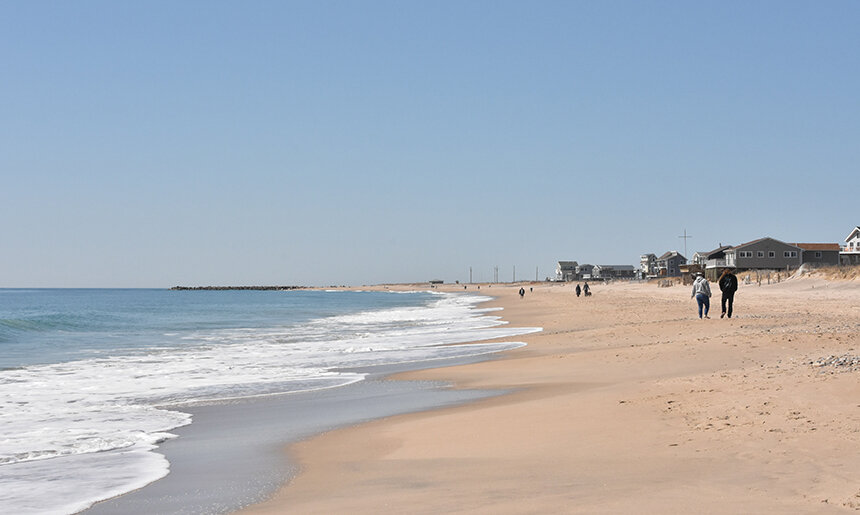In Providence an Unfair Tale of Two Tree Canopies
September 16, 2021
PROVIDENCE — Benefit Street was quiet and cool as more than 20 people gathered on a late Sunday morning to experience the stark difference in tree cover from one side of the city to the other.
The Sept. 12 event, organized by Vrinda Mathur, an industrial design graduate student at the Rhode Island School of Design and a Maharam Fellow with Social Enterprise Greenhouse, brought together tree advocates and locals to witness the impact trees make on an urban landscape. The walk and talk spotlighted the discrepancies between leafy Benefit Street and the tree-bare streets of South Providence.
“[Trees] are important for many reasons,” Mathur said. “The shade that they provide, the kind of experience you have when you’re surrounded by trees … the benefit or the impact it has on our physiological health, on our mental health.”
Tree canopy can help combat the heat-island effect, in which the built environment of urban areas absorbs heat, contributing to higher experienced daytime and nighttime temperatures than in surrounding areas.
Trees also contribute to better overall health outcomes, lower obesity rates, and fewer instances of type 2 diabetes and asthma. Social cohesion has also been linked to tree canopy and a community’s ability to enjoy a city block with protection from the sun and heat.
“When we’re changing the landscape, when we’re bringing in more trees, we’re also making it a space where people can move around, can have positive experiences,” Mathur said.
Last year, American Forests, a national conservation nonprofit formed in 1875, launched an online Tree Equity Score map, showing which census blocks have abundant tree cover and which are lacking trees and the resources to acquire them. The score, which is updated every two years, is based on environmental and demographic indicators including tree canopy cover, surface temperature, age, people of color, and percentage of people in poverty or unemployed.
According to Molly Henry, a senior climate and health manager with American Forests, the metric is meant to focus attention on which areas need the greatest investment in urban forest.
“We are really looking at how we as a community … assess and deploy resources,” Henry said.
At the corner of John and Benefit streets, the tree equity score is a perfect 100. Across the river, the census block stretching from the Jewelry District to South Providence along Eddy Street scores among the worst in the state at 63.
“There are many reasons as to why some areas may have low tree canopy and why the others may have higher ones,” Mathur said.
Areas with low tree canopy today often correlate to areas that were historically redlined or are home to large proportions of people of color.
Recent investments have advanced green infrastructure in some spaces, but, according to Henry, not all investment is put in the places that need it most. Tree canopy investments recently made in the Providence Riverwalk area may appeal to tourists, Mathur said, but have limited day-to-day impact for residents living in tree-sparse areas.
“Who is getting access to those spaces and really appreciating them?” she asked.
Last week, the Rhode Island Department of Environmental Management handed out 1,000 free trees to residents to help “beautify their yards, save energy, and lower their utility bills,” according to a Sept. 8 press release. Within a week, all trees had been claimed. But, according to Mathur, these trees may not be getting to the places that need them most.
She said this style of program presents some “logistical or administrative” issues. The trees were available for pick up only, she noted, which can make it difficult for those without a car to take advantage of the program.
She said the sapling giveaway was not widely publicized. Alerting neighborhood groups or posting signs in community centers could help spread the word further, she added, and get trees to the state’s most exposed urban areas.
Tree-planting programs also often must be “citizen-led,” Mathur said. Community members take on a years-long task of tree maintenance with limited immediate reward. This puts areas with a high volume of renters — who may not care about multi-year investment — and low-income residents — who may not be able to spend time and money on such a project — at a disadvantage.
“I think the solution really isn’t just coming in and planting trees,” said Cassie Tharinger, executive director of the Providence Neighborhood Planting Program, a Providence-focused street tree stewardship program. “There are real structural and material barriers. … What has to happen is shifting and tackling that.”




I hope they find a way to get more tree cover all over the city – but is it true that some in the poorer neighborhoods object because it leads to "gentrification?"
Also need to remember that it takes time for a tree sapling to grow large enough to provide the described benefits. There also should be some education directed to urban residents about the importance of retaining mature trees. An arborist friend of mine talks about the requests he gets to cut down trees in yards because the owners don’t like to rake the leaves.
Awareness is a fine idea, but there is a very fine line between raising awareness within the communities that where these initiatives occur versus the communities that exploit these initiatives for money, clout, and credibility (read: the PNPP being a predominantly White-led initiative working — and being paid to work — in predominantly communities of color). Engaging with these redlined communities is not enough if you do not allow them the platform to advocate for themselves and offer them the support and resources for themselves to implement the solutions they need and know they need rather than raising awareness to a group of wealthy (predominantly White) community "overseers" who are benefiting off the exploitation of these communities "in pain".
These two questions were asked during the walk. (1) how do you engage the community in these decisions and (2) how does the leadership board at the PNPP represent the communities they are working in? The PNPP answered both questions very poorly using typical statements like, "we are trying to engage with them and let them have a voice"; however, there were no specific steps they were taking nor any form of critical thinking and conversation as to the complications that arise when White people enter communities of color and force-feed them the rhetoric of "your neighborhood is ugly and you are experiencing pain from it; we will plant trees to save you." Far more conversations need to be happening in regards to the colonial ideologies that come with these types of initiatives, and those conversations were neither facilitated well nor even engaged with properly during this walk. The least they could do is have an ACTUAL community member at the event to advocate for themselves; however, there seemed to be no outreach on the part of the organizers to speak with them. The walk was fine, but it was generally unaware of the real sociopolitical complications that the initiative inforces.
A better example of tree equity is Groundwork Rhode Island’s Climate Safe Neighborhoods projects happening in Pawtucket which are lead by a born-and-raised member of the Pawtucket community who has already completed major accomplishments the PNPP is striving towards but is struggling to implement.